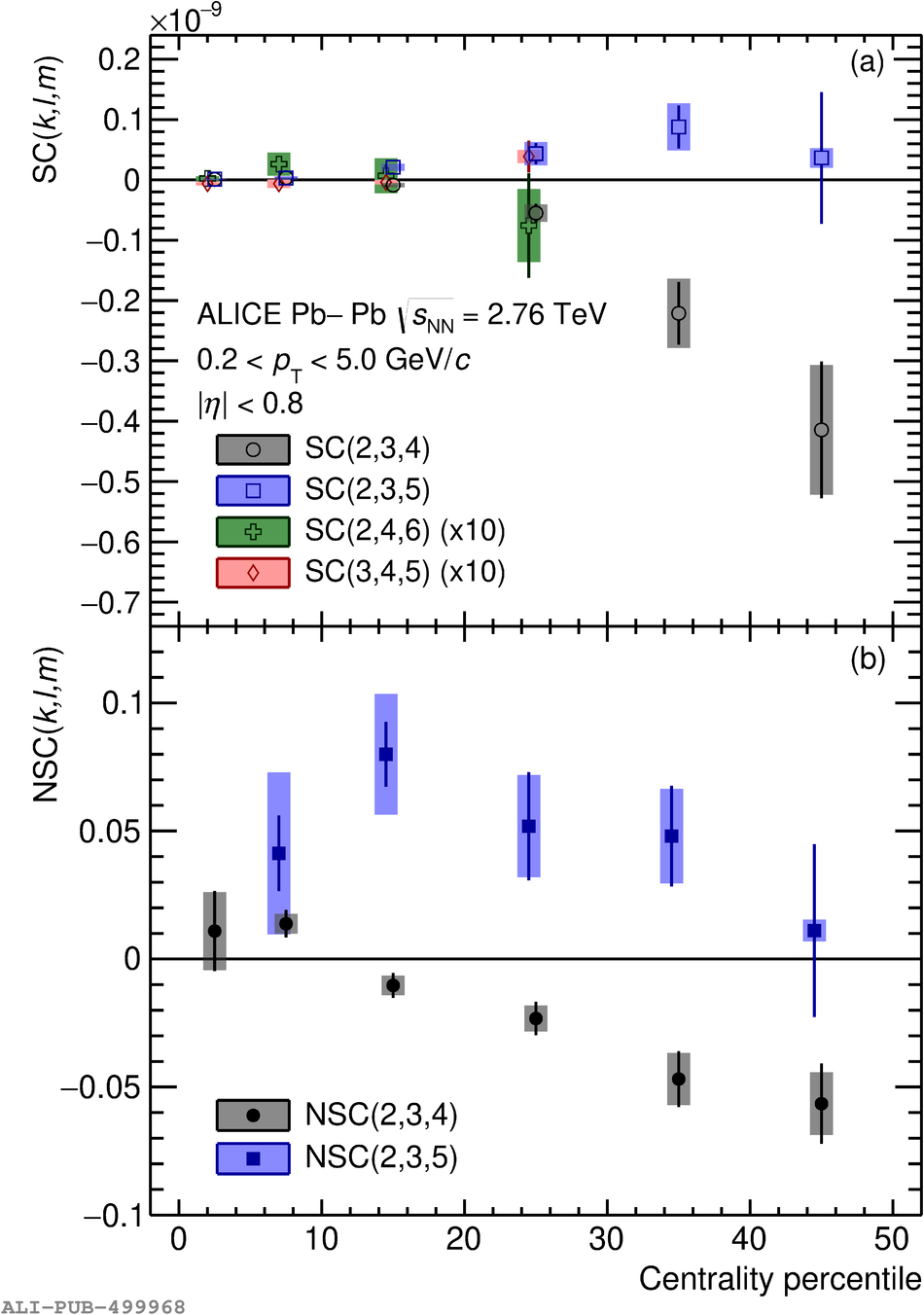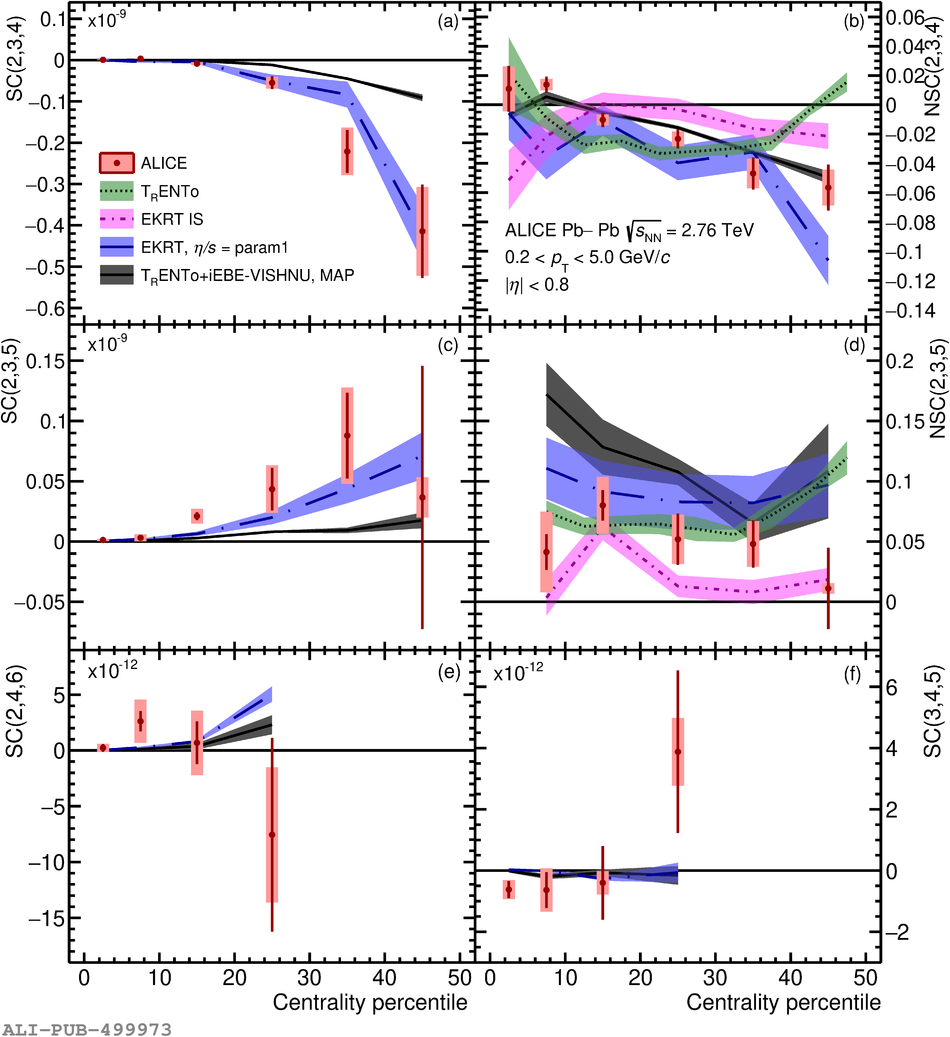The event-by-event correlations between three flow amplitudes are measured for the first time in Pb--Pb collisions, using higher-order Symmetric Cumulants. We find that different three-harmonic correlations develop during the collective evolution of the medium, when compared with correlations that exist in the initial state. These new results cannot be interpreted in terms of previous lower-order flow measurements, since contributions from two-harmonic correlations are explicitly removed in the new observables. Comparison with Monte Carlo simulations provides new and independent constraints for the initial conditions and system properties of nuclear matter created in heavy-ion collisions.
Phys. Rev. Lett. 127 (2021) 092302
HEP Data
e-Print: arXiv:2101.02579 | PDF | inSPIRE
CERN-EP-2021-005
Figure group


